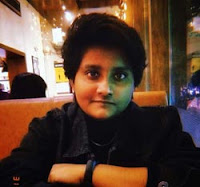Kishore Kumar, born on August 4, 1929, was an Indian actor, playback singer, composer, and director known for his comic roles in Indian films of the 1950s and for his expressive and versatile singing voice, which, in the course of a career that spanned nearly four decades, he lent to many of India’s top screen actors.
Kishore Kumar was the youngest child of a Bengali professional family that had settled in west-central India, in the present-day state of Madhya Pradesh. When he was a teenager, he got a job in Bombay (now Mumbai) as an occasional chorus singer at the Bombay Talkies film studio, where his elder brother Ashok Kumar was the reigning star. Although his heart was in singing, the younger Kumar made his acting debut in 1946 in the nondescript film Shikari. It was the 1951 release of Andolan, however, that propelled him to stardom as a singer-actor and ultimately freed him from the shadow of his brother Ashok.
Soon he evolved his own, inimitable style as an actor and as a singer. After watching Andolan (1951) his first film as a hero, Ashok Kumar was bewildered of his natural acting. Ashok Kumar told a funny tale. Apparently, Kishore had a very bad, hoarse voice in childhood. Accidentally, once he cut his finger with a kitchen knife and went on crying for days. According to Ashok, it was that incessant crying that corrected Kishore’s voice. In contrast, it was his ability to induce incessant laughter that made him such a popular actor in fifties and sixties with hits like New Delhi, Bhai Bhai, Chalti Ka Naam Gaadi and Half Ticket. His peculiar brand of humour with a lot of facial and body gestures, superb miming and excellent timing, made him a hot favourite as a comedian hero. Practically every top heroine – from Meena Kumari to Vyjayanthi Mala played his leading lady sometime or other.
His special brand of comedy can be seen one particular scene from Half Ticket, it’s the scene where he is playing a salesman who has come to deliver a record player at a lady’s place. This lady (Shammi) – the side-kick of the villain (Pran), then tries to entice Kishore into dancing with her, in order trying to find out whether he is hiding their stolen diamond in his trousers’ back- pocket. As her hands keep on coming onto his bottom trying to reach his back-pocket, the poor guy- totally ignorant of this whole ‘diamond’ scenario, keeps himself gyrating, all the while saving his bottom from the lady. His baffled facial expressions and his crazy dance steps in this scene are just hilarious! Actually, this comic image hampered his acting career by limiting his roles only to that genre. His serious films like Naukari and Musafir were rejected outright by audiences. His best serious role was in his own production – Door Gagan Ki Raahon Mein. His portrayal of a father battling to cure his mute child was superbly moving. As a film-maker, he veered from being excellent to plain ridiculous. If his earlier films Jhumroo, Chalti Ka Naam Gaadi, Door Gagan Ki Chhaon Mein and to an extent, Door Ka Raahi were examples of good cinema, then all his latter films like Badhati Ka Naam Dadi and Chalti Ka Naam Zindagi were simply terrible.
All the while, when his acting career was thriving, his singing had taken back stage. Those days he only gave playback for himself and for Dev Anand. Even in those days he was singing occasional gems like Aa Chalke Tujhe, Nakhrewali and Koi Lauta De Mere Beete Huye Din, but still composers were mostly making him sing frivolous comic numbers going with his screen image. In fact, in those days, most of his good songs were composed by only two composers – one was Sachin Dev Burman and the other was Kishore himself.
The turn-around came at a difficult period in his life. He had just lost his wife – Madhubala; his movies were doing badly and he was at crossroads of his career. Composer Sachin Dev Burman, always reserving his best for Kishore, revived his career as a playback singer and as the budding superstar Rajesh Khanna crooned Roop Tera Mastana, Mere Sapnon Ki Rani Kab Aayegi Tu and Kora Kaagaz Tha Yeh Man Mera in Aradhana (1969), Kishore Kumar’s voice became the rage of nation. There was a time in the sixties, when the then reigning number one playback singer Mohammed Rafi had given playback for Kishore in songs like Man Mora Baawra and Ajab Hai Dastaan Teri Aye Zindagi, but now the wheel of fortune had turned a full circle. Kishore Kumar was now the new playback king. Every actor, young and old, now wanted Kishore to sing his songs.
From then on, he never ever let go of his top position as a playback singer and composers – better late than never- provided him with ample opportunities to prove his mettle. So, we got to hear his mellifluously macho voice in romantic classics like Yeh Shaam Mastani and Pal Pal Dil Ke Paas; soulful sad songs like Badi Sooni Sooni Hai and Chingari Koi Bhadke; colourful qawwalis like Sachchai Chhup Nahi Sakti and Kahin Janaab Ko and breezy fun-songs like Khaike Paan Banaraswala and Pag Ghungaroo Baandh.
Towards the end of his career, his voice had thickened but still retained its hold on listeners. For the same voice could suddenly transform itself in a sublime, feather soft Chhookar Mere Man Ko. Remembering Kishore is all about remembering all these magical moments where his artistry touched our heavy hearts to make them a little lighter and also made our dull lives a shiny bit brighter!
Author’s Bio:
Aritri Ghosh
Amity University Kolkata

Comments
Post a Comment